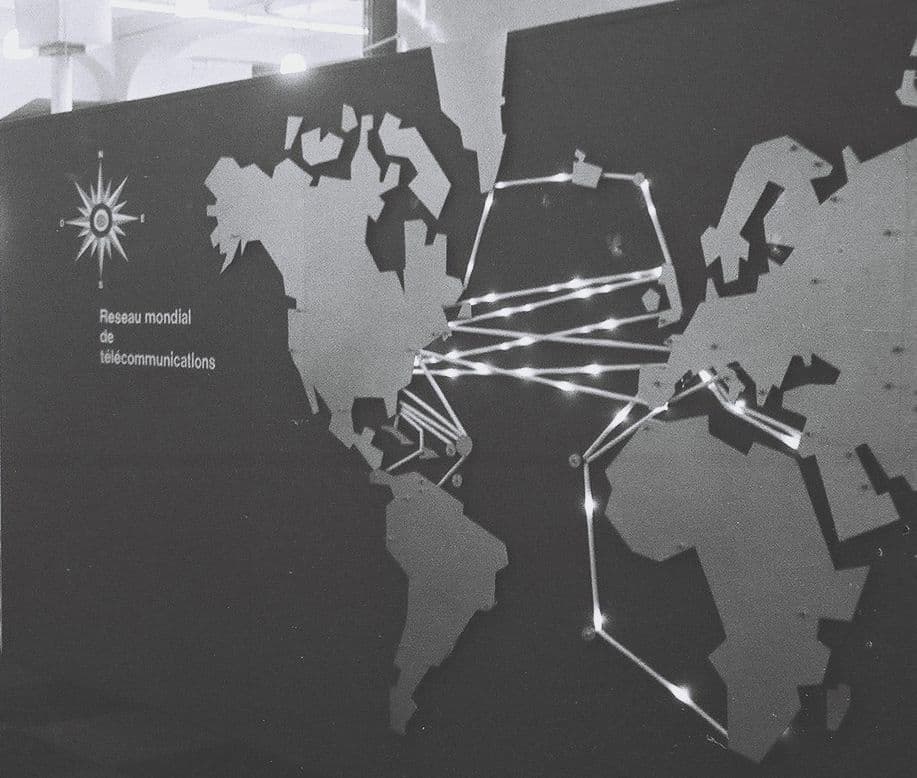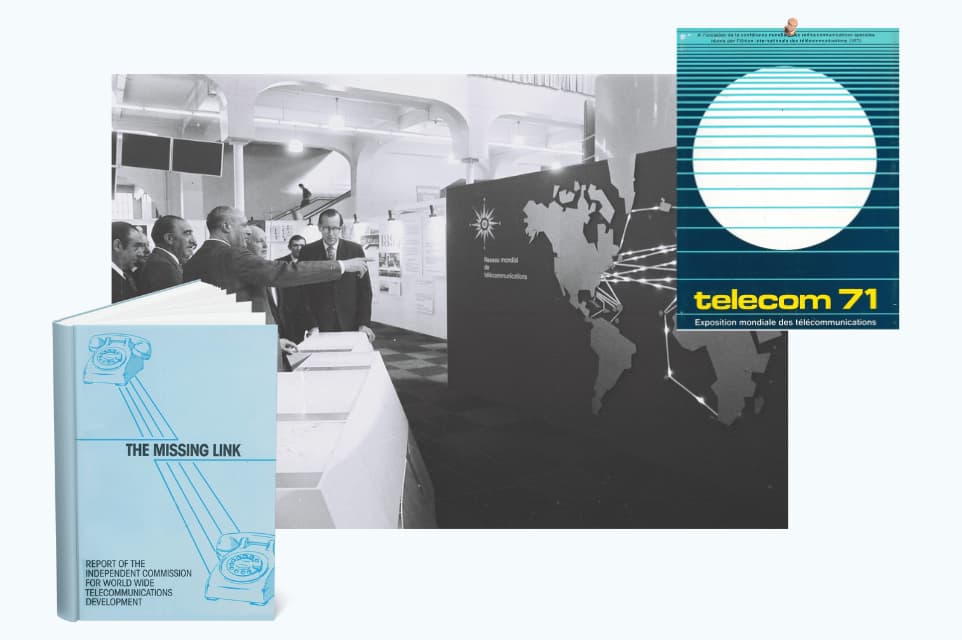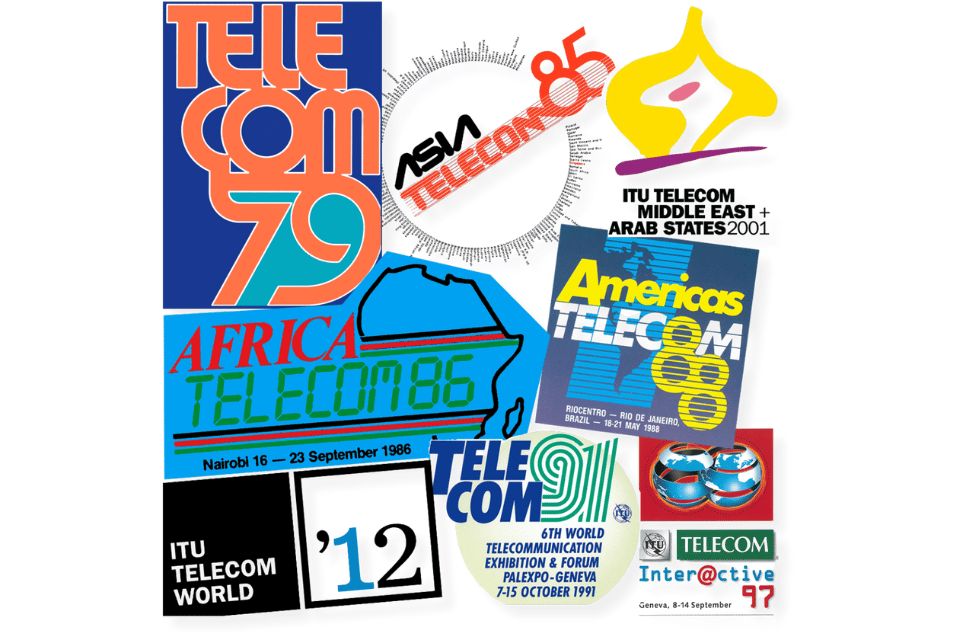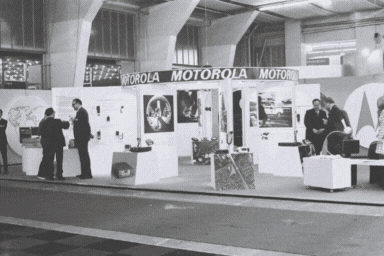- HomeOur storyOur visionHighlights

Fostering new global networks
Modern connectivity began to take shape as telecommunications and computing merged, bringing the Internet to the world. Technology became a part of daily life, industries connected like never before, and ITU adapted to the needs of a rapidly expanding global membership. Recognizing the power of tech and telecoms for development, the UN proclaimed 1983 to be World Communications Year.

1971
The first global telecommunication exhibit
ITU organized Telecom 71, the world’s first global-scale telecommunication exhibition, as a “Message to the 21st Century.” The new global event brought together governments, industry, academia, and international organizations to showcase cutting-edge technologies and exchange ideas.
For the next 50 years, ITU Telecom events provided a global stage for showcasing technological advancements, shaping industry discussions, and more. These events facilitated high-level networking, strategic debate and knowledge-sharing within the global ICT community, setting the agenda for accelerating tech development.
The influence of ITU Telecom extended beyond its own exhibitions, inspiring other global platforms focused on technology such as the Future Networked Car Symposium, an annual event launched in 2005 to showcase and share information about the latest advances in vehicle connectivity, and the annual AI for Good Global Summit, which exhibits innovations in generative AI, robotics, and brain-machine interfaces.


A selection of logos from Telecom events over the years. Regional Telecom events, held from the 1980s to the early 2000s, complemented Geneva-based Telecom World events. These regional gatherings aimed to bring the latest telecommunication equipment and techniques directly to local communities, reflecting ITU’s belief in regional knowledge-sharing and cooperation to develop modern networks and foster economic and social progress for all countries, large and small.


An exhibitor’s stand in 1971 at the first ITU Telecom event (first image) and an exhibitor’s stand in 1999 at ITU Telecom WORLD (second image) Telecom events featured exhibits where both governments and the private sector could present their latest initiatives and products. Visitors engaged directly with game-changing tech, letting them experience first-hand the innovations shaping the future of global communications.


HRH Princess Beatrice, accompanied by Seizo Onoe, Director of the ITU Telecommunication Standardization Bureau, visits the AI for Good exhibition in 2024 ITU held its final Telecom event in hybrid format from Viet Nam in 2021. Its 50-year legacy continues through new events like the AI for Good Summit, which brings together ITU’s unique membership to exchange ideas and showcase the latest breakthroughs in artificial intelligence. The Summit features dynamic exhibitions and presenters highlighting AI innovations that support sustainable development.
1976
Contributing to the development of the Internet
An ITU standard published in 1976 (CCITT Recommendation X.25) established the foundation for packet switching, a pivotal technology for the evolution of the Internet. This standard set out crucial protocols and procedures for connections between user and network devices. This allowed different networks to work together, enabling interconnectivity on a global scale.
ITU standards were crucial in the creation of modern digital communications, from shaping the development of TCP/IP, the protocol suite that powers the internet, to establishing standards that enabled email and emerging technologies like the Internet of Things. By 2015, over 95% of global internet traffic was carried by fiber-optic cables built to ITU standards.


A diagram illustrating “packet level DTE/DCE interface state” from the first edition of CCITT Recommendation X.25. X.25, developed in the early 1970s, was a landmark achievement in packet-switched technology, allowing telecom providers to build public networks that transmitted data digitally, initially over analog lines. The experience gained with X.25 helped pave the way for the development of TCP/IP, the protocol suite that underpins the Internet. ITU’s X.400 recommendations also set international standards for message handling systems, laying the foundation for modern email.


A 2023 meeting of ITU-T Study Group 15, a vital source of international standards and technical specifications that shape global communications infrastructure. ITU standards have formed the backbone of global communication systems through every stage of technological evolution. ITU study groups serve as key forums for developing and adapting innovative applications to meet emerging needs.


Some of the devices and services supported by IoT technologies. Recommendation ITU-T Y.2060 provides an overview of the Internet of Things (IOT) as essential infrastructure for the global information society, enabling advanced services by interconnecting physical and virtual things, based on interoperable, and continually evolving, information and communication technologies.
1985
Towards universal connectivity
The Missing Link report, released by ITU in 1985, highlighted the significant disparity in telephone access between developed and developing countries. It underscored the direct correlation between access to telecom infrastructure and a country’s economic growth. The report called for ITU to play a more active role in promoting connectivity for everyone, everywhere.
Building on this vision, ITU convened the first World Telecommunication Development Conference (WTDC) in Arusha, Tanzania, from 27 to 30 May 1985. The conference marked a historic step in addressing global telecommunications challenges and inequalities.
Although connectivity and tech access have improved since the mid-1980s, the digital divide remains a significant challenge. ITU continues leading efforts to bridge this gap and achieve universal and meaningful connectivity.
ITU works in all regions of the world and develops tailored programmes to allow everyone to access and use the Internet. Key initiatives aim to expand digital infrastructure, improve regulatory and market conditions, and ensure networks are available and affordable everywhere.


On the left, the cover of “The Missing Link” report, also known as the Maitland Report. On the right, Sir Donald Maitland, Tanzanian officials, and members of the Independent Commission for World-Wide Telecommunications Development plant a symbolic tree in Arusha. The Missing Link report, also known as the Maitland Report, was the work of the Independent Commission for World Telecommunications Development, headed by British diplomat Sir Donald Maitland. Another outcome of their work was the establishment of the Centre for Telecommunications Development (CTD) in 1986 to promote global telecommunication development. Three years later, the ITU’s Plenipotentiary Conference (Nice, 1989) created the Telecommunication Development Bureau (BDT).


Public telephone booths being used by locals in Manaus, Brazil in the 1980s. The Missing Link report called on governments and stakeholders to ensure that all people would be “within easy reach of a telephone” by the early 21st century. Over the decades, the focus shifted from fixed-line telephony to mobile and digital connectivity. As technology evolves, ITU remains committed to bridging the digital divide and achieving universal and meaningful connectivity.


The cover of Facts and Figures 2024 ITU’s flagship Facts and Figures report analyzes global connectivity trends, covering indicators such as internet use, affordability, and more. The 2024 edition shows that while all indicators have improved, reaching low-income communities remains challenging, with about one-third of the world still offline.